
Technology
Quantum computer autocalibration
The critical technology to enable broad deployment of quantum computing
Human-in-the-loop hardware tuning is holding quantum computing back
Progress in quantum computing hinges on the performance of quantum hardware. But as processors scale in qubit count and complexity, the task of testing and calibrating them becomes exponentially more difficult.
Today’s manual, human-driven workflows are slow, costly, and fundamentally unscalable, making them a bottleneck for the industry. Whether in the R&D labs of quantum hardware manufacturers or in the hands of early adopters, these outdated processes stand in the way of a truly scalable quantum future.

Unlock scalable quantum computing with autocalibration
Boulder Opal Scale Up is the industry’s first push-button solution for fully autonomous QPU testing and calibration—no human intervention required. Designed for both research environments and enterprise-scale deployments, it removes manual bottlenecks from the control stack.
By combining advanced AI with quantum control techniques, Boulder Opal Scale Up delivers fast, repeatable calibration cycles thereby empowering teams to maintain high-performance quantum systems with ease and consistency.
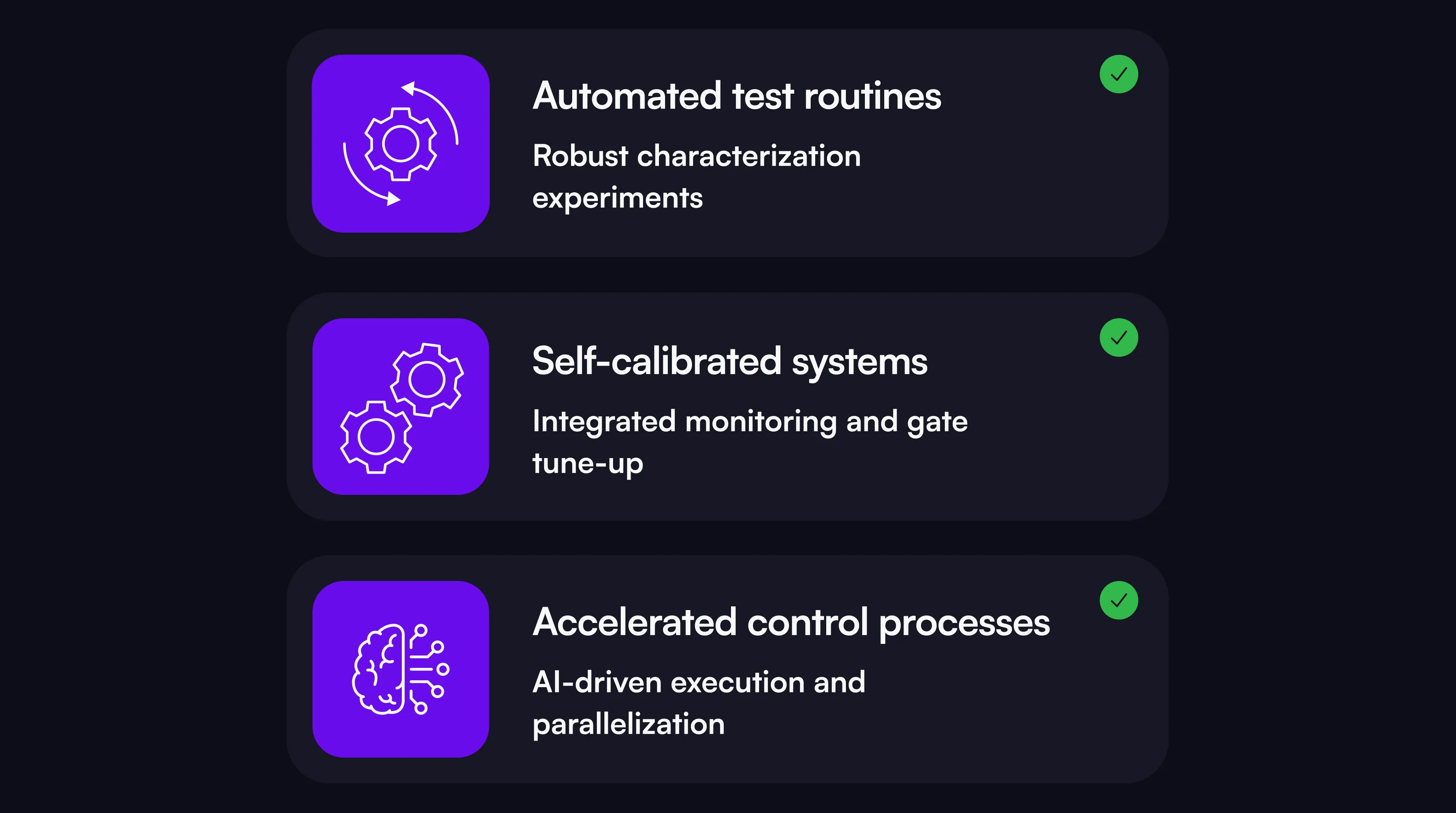
A truly autonomous calibration agent built for reliability in your most critical deployments
Boulder Opal Scale Up combines a cloud-accelerated architecture with a flexible local Python client, designed to integrate seamlessly with any quantum controller and streamline your test and calibration workflows.
At its core is a robust state machine that orchestrates routines from the Function Library, translating them into controller-specific commands and executing them on local hardware. Measurement data flows back for analysis, powering a continuous feedback loop that enhances system performance over time.
Unlike brittle, linear lab scripts, Boulder Opal Scale Up delivers resilient, repeatable, and scalable orchestration linking your quantum experiments, control logic, data, and users through a unified and intelligent software layer.
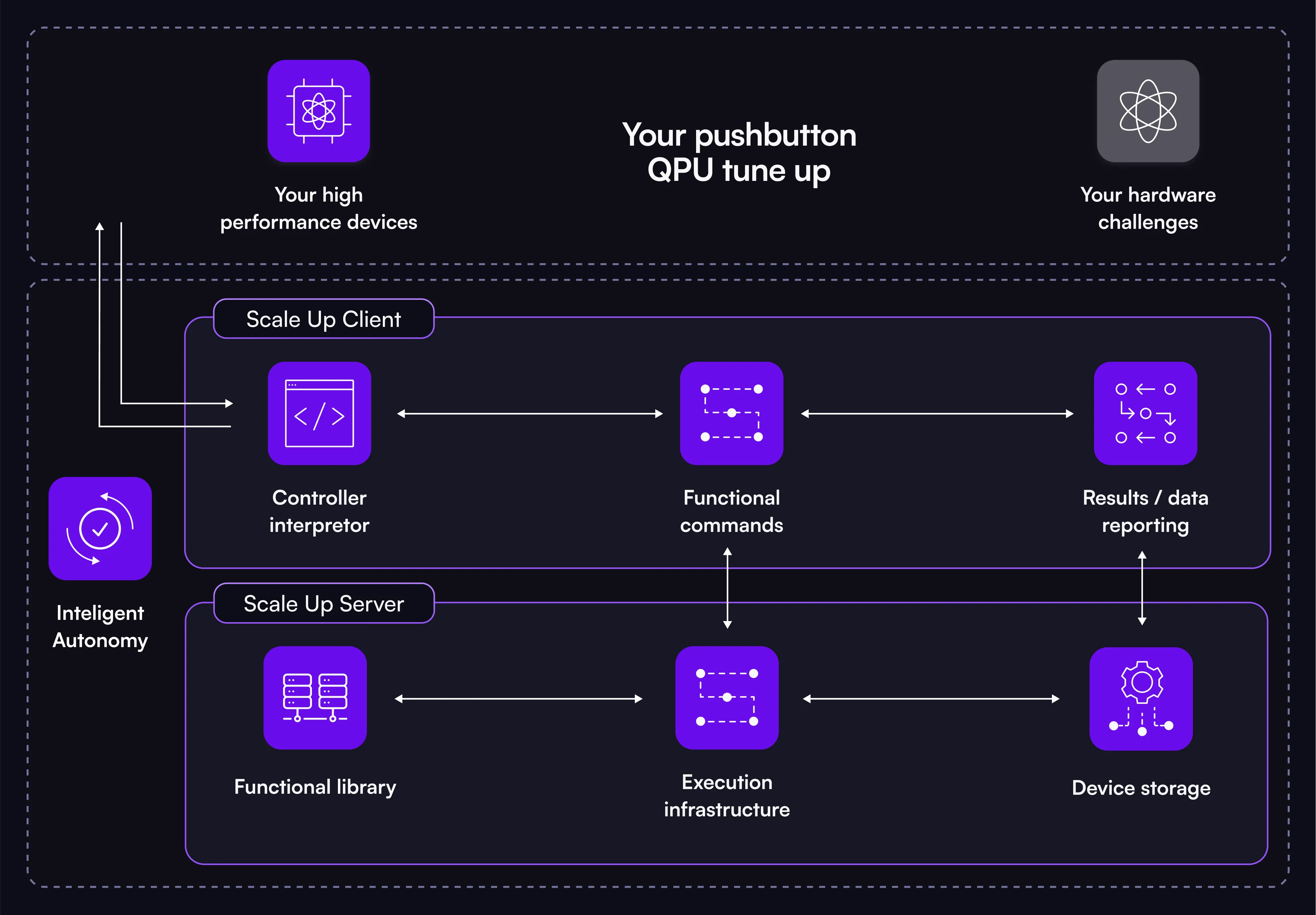
Key capabilities of Boulder Opal
The keys to impactful, autonomous control
Boulder Opal Scale Up stands apart from other control solutions by abstracting away low-level control complexity, empowering you to achieve critical device outcomes effortlessly. It provides a workflow manager that self-corrects during complex quantum hardware processes, significantly reducing the need for human expert intervention.
Explore the key capabilities that distinguish Boulder Scale Up below.
A data-driven state machine that powers full autonomy
At the core of Boulder Opal Scale Up is an intelligent state machine that replaces manual intervention with adaptive, data-driven control. When an experiment fails, it automatically diagnoses the issue, runs targeted measurements, and retries with optimized parameters to ensure robust, consistent performance. By removing brittle scripts and static schedulers, it delivers reliable automation for even the most complex quantum workflows.
The state machine uses incoming results to ensure the acceptable data is collected.
This approach is nested, working across the automation from low-experiments, up through high-level component routines.
This enables full test and calibration sequences to be executed across the entire-device, everytime.
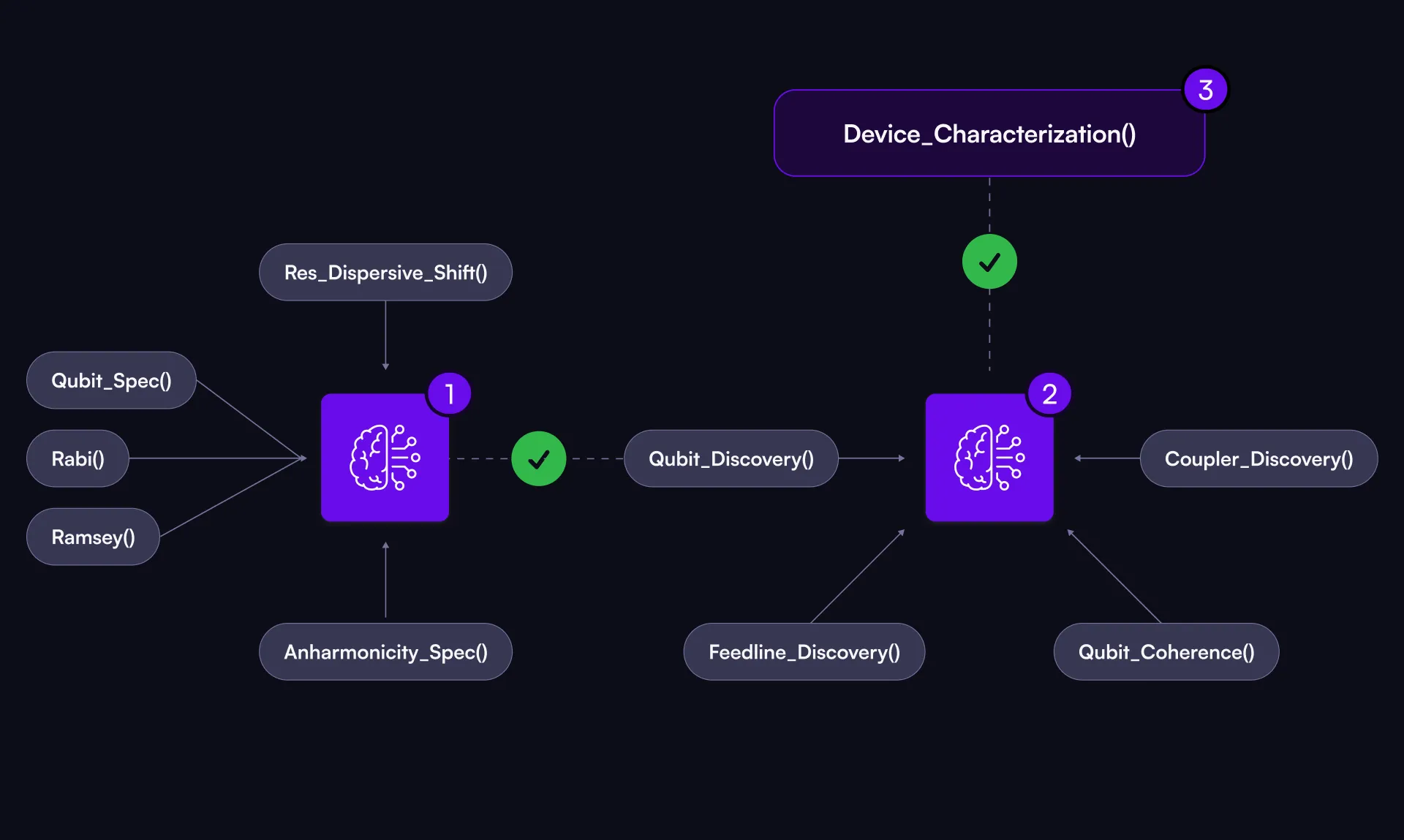
A visual representation shows how a state machine analyzes multiple experimental results to make decisions about test sequences.
Optimized control and characterization routines, ready to run
Boulder Opal Scale Up includes a library of prebuilt, high-performance control functions covering everything from full QPU calibration to targeted single-component tests. These routines translate directly into hardware-level instructions, handling both simple and complex operations with precision.
One-call QPU tuning: Fully characterize and calibrate your quantum processor with a single function call.
Targeted component tests: Apply precise routines to individual components for focused investigations.
Streamlined debugging: Run flexible, low-level experiments to isolate and resolve hardware issues quickly.
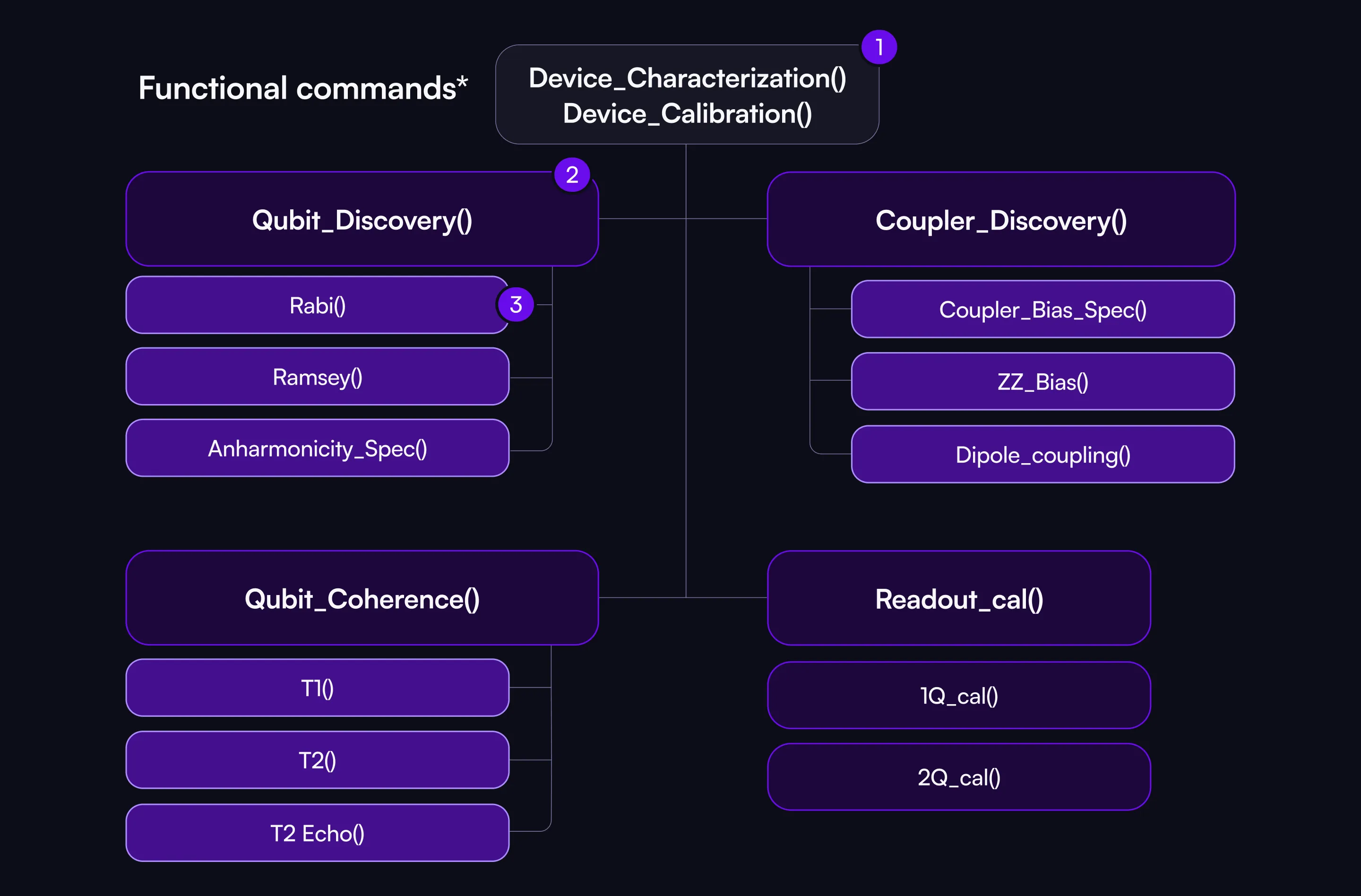
Suppress errors and drifts to keep hardware performance at peak.
A flexible framework allows custom integration of user-defined tasks
An experiment SDK allows you to create custom control nodes. These DIY functions integrate automatically with all the other features like controller interoperability and device data management. This means users still can access standard tune-up tasks from Q-CTRL while also developing unique, specialized routines for critical device operations.
The SDK defines how experiments are created, such as data structures, signals definitions, and control sequences/loops.
These DIY routines natively interact with the rest of the Boulder Opal Scale Up architecture.
Once these routines are no longer a strategic priority, they can be full offloaded to Q-CTRL for long-term availability.
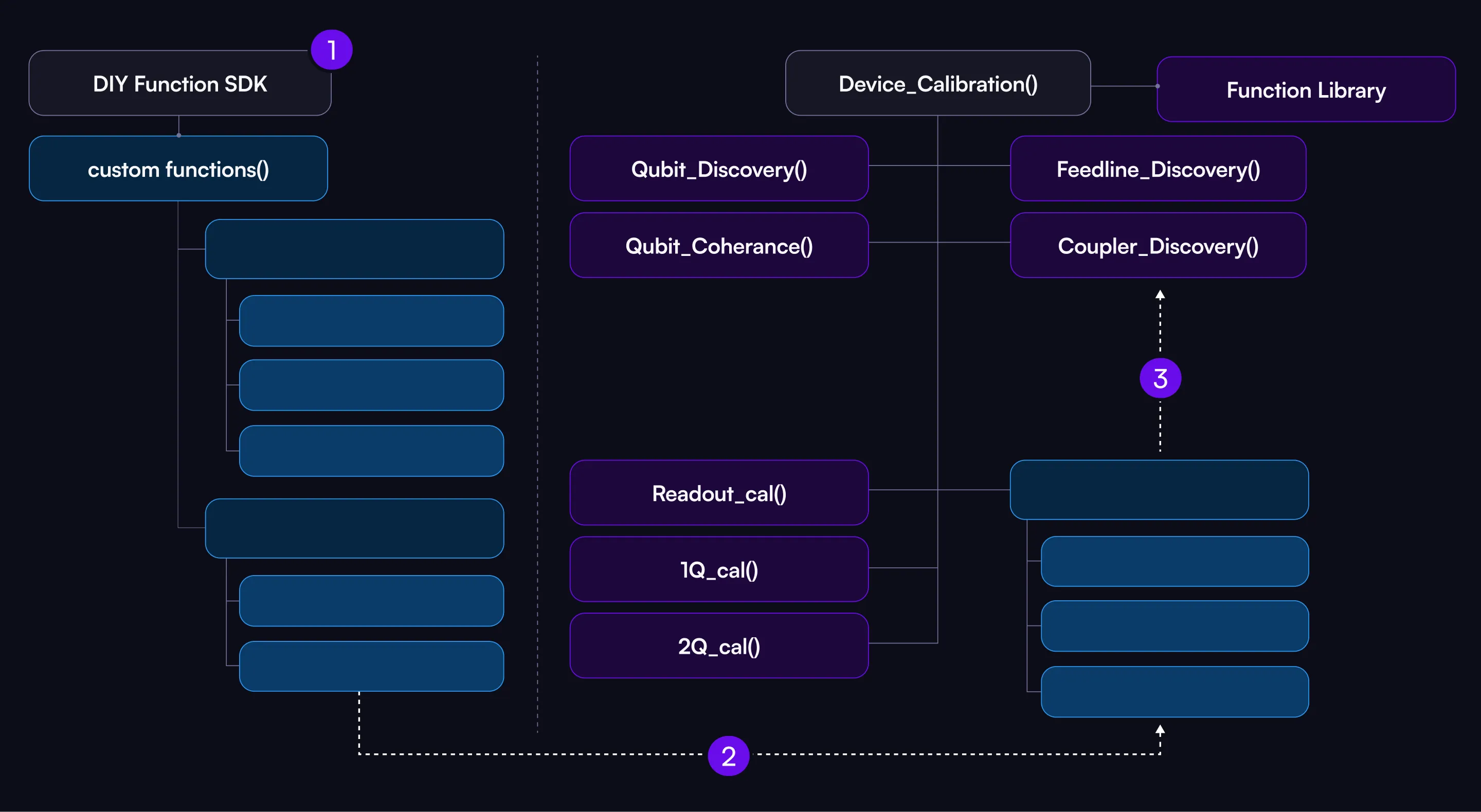
Through the experiment SDK, custom functions are built by users and automatically integratable with the native Function Library.
Interpreter modules abstract away low-level controller languages
Our built-in interpreters translate high-level quantum experiments into low-level controller instructions—no user integration required. This plug-and-play abstraction layer eliminates the complexity of working across diverse control hardware, accelerating development and enabling full vendor flexibility.
Q-CTRL develops and maintains interpreter modules, so you don’t have to.
Out-of-the-box support for the most widely used quantum controllers.
Easily extendable to support custom or emerging controller vendors on request.
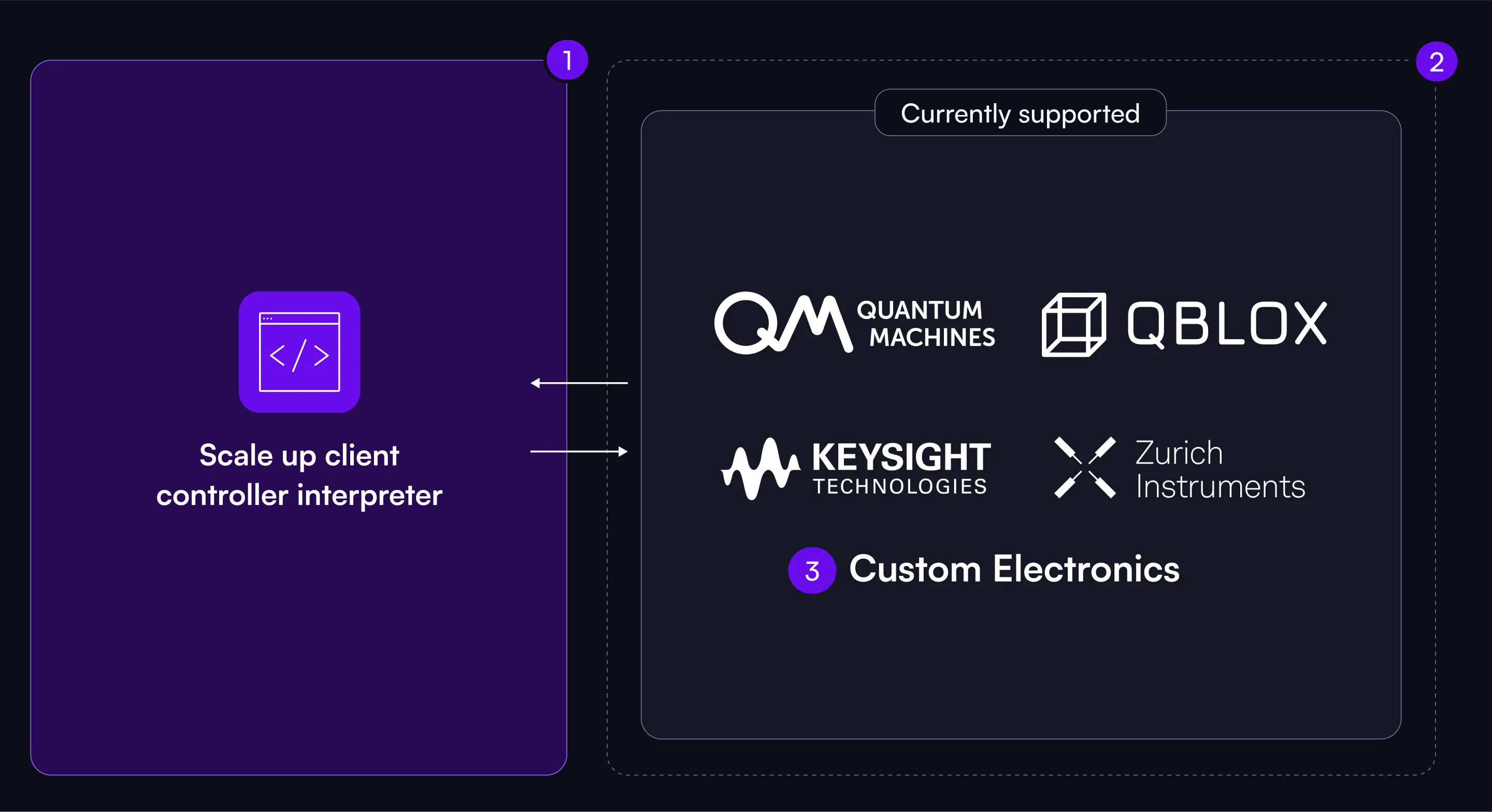
A swappable software module enables any Boulder Opal Scale Up solution to work with any control language.
Virtual devices turn measurement data into actionable insight
The "virtual device" is the storage object of Boulder Opal Scale Up, aligning all experiment data with a digital model of your quantum system. This structure natively organizes your parametric characterization data, gate waveforms, specifications, and historical results in one place. The results - continuous insights into your deices performance, stability and health.
Each “virtual device” stores the data of a physical system that was tested or calibrated.
Specific data fields are aligned to device components and automatically updated during experiments.
Raw data and results from the history of the device are aligned to specifications to maximize for easy reference.
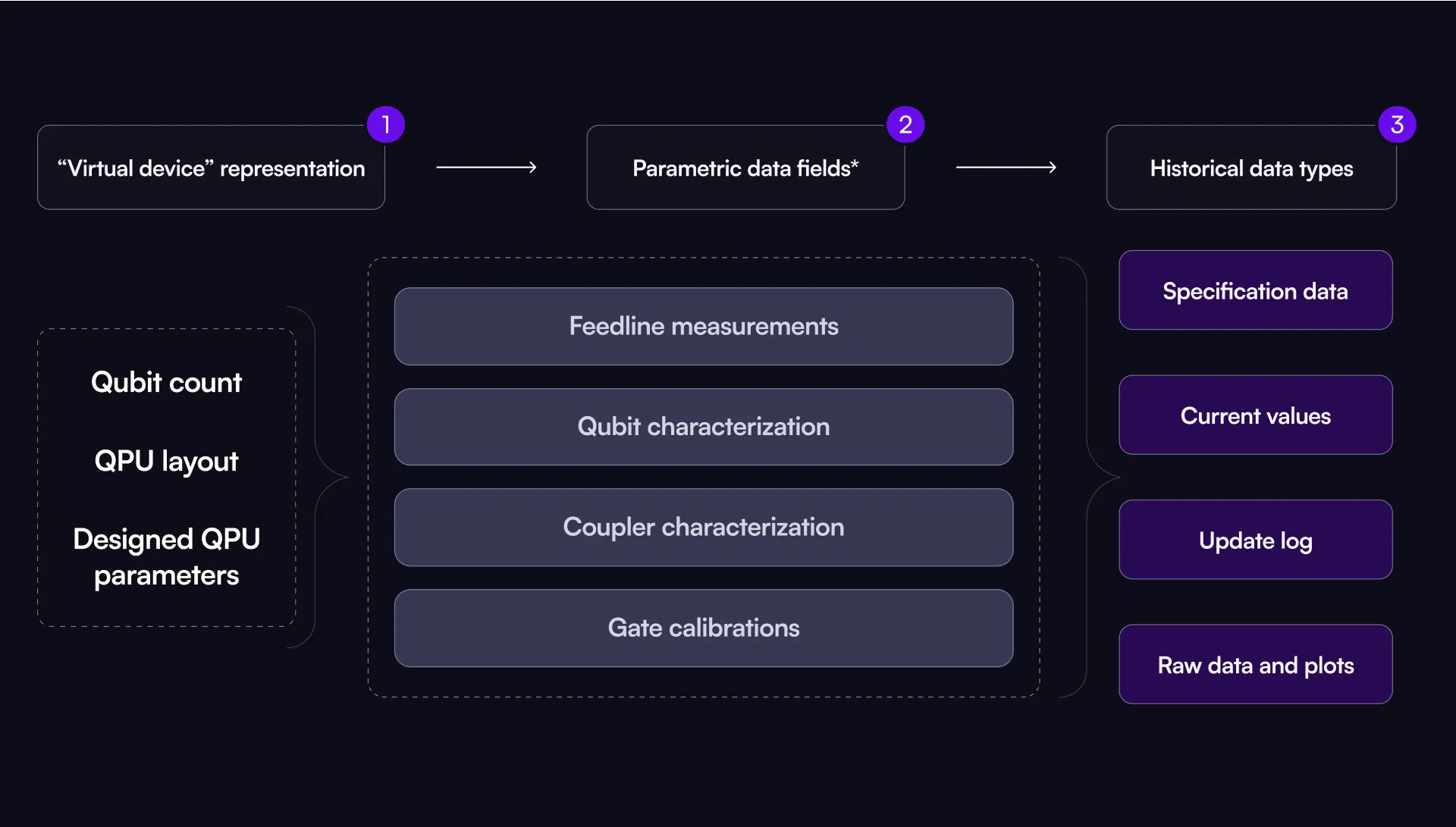
From labs to data centers, organizing quantum device data is key to maximizing the operational impact of quantum devices.
WHY AUTOCALIBRATION
Remove bottlenecks in throughput, usability, and performance
Autonomous calibration breaks through the limitations of manual tuning, lab-grade tools, and rigid automation. It empowers quantum hardware vendors and system users to test, deliver, and operate quantum computers with speed and simplicity, eliminating the friction that holds back performance at scale.
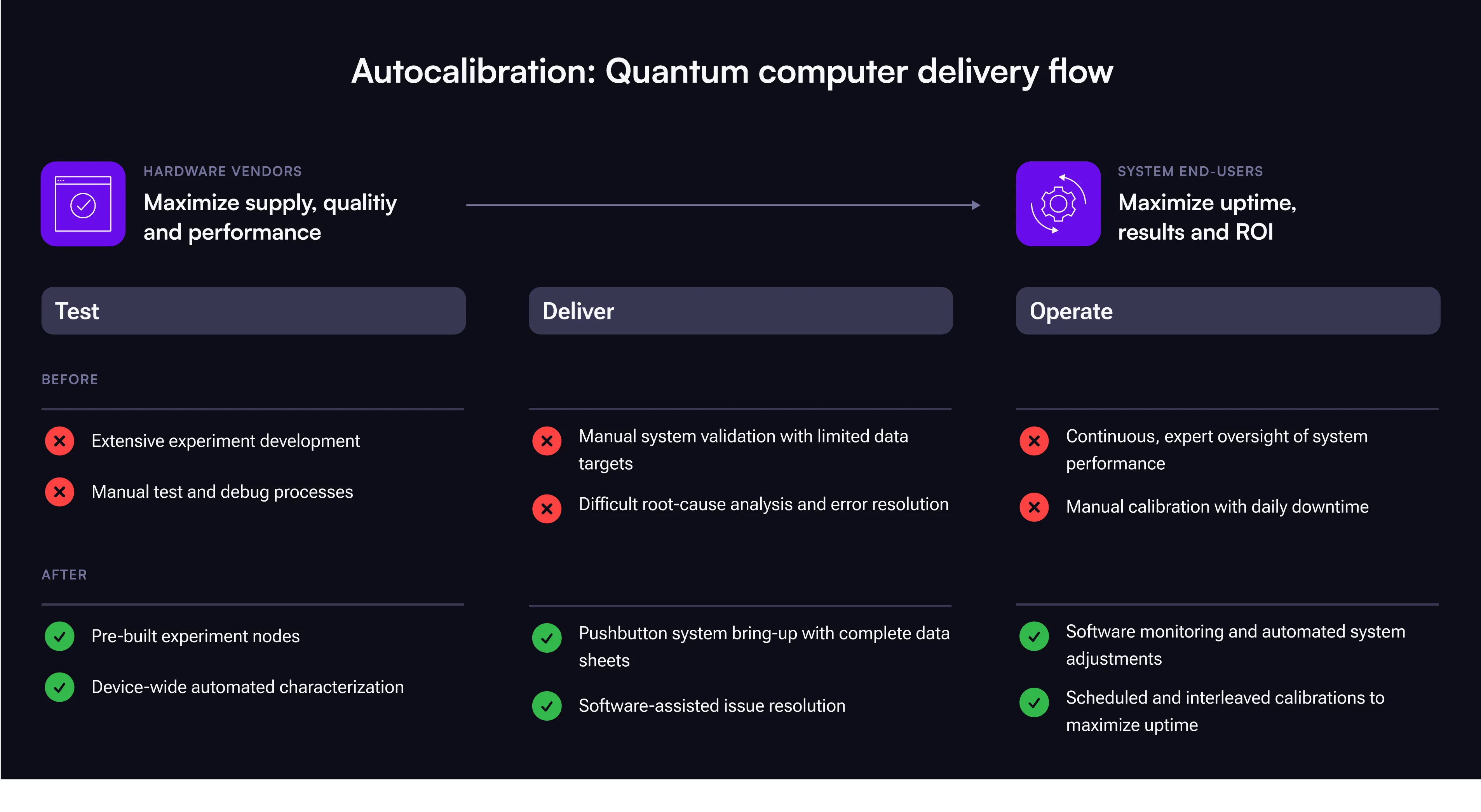
Learn how autocalibration brings quantum to HPC and data centers

Get started now
Make quantum technology useful







